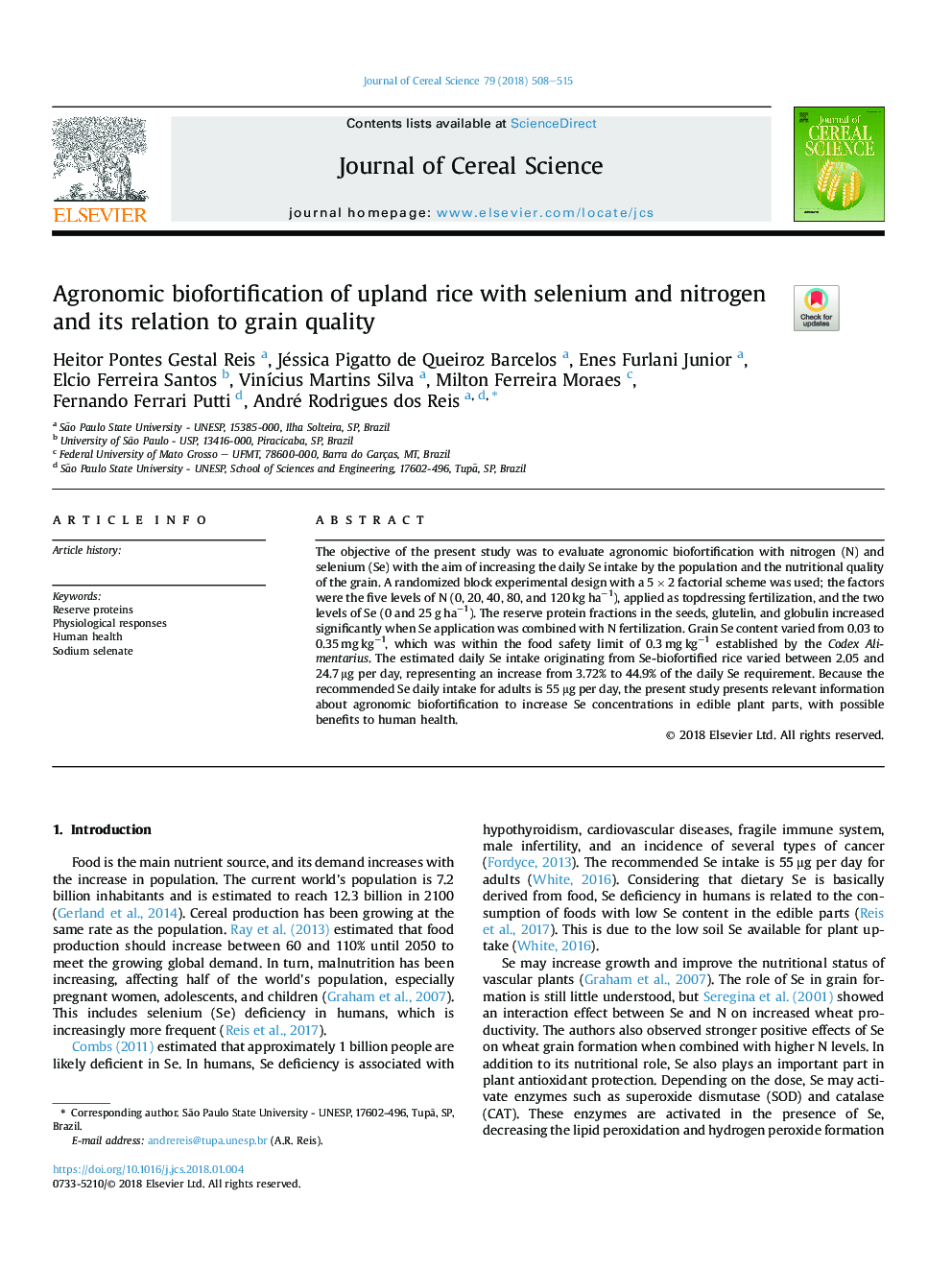| Article ID | Journal | Published Year | Pages | File Type |
|---|---|---|---|---|
| 8881542 | Journal of Cereal Science | 2018 | 8 Pages |
Abstract
The objective of the present study was to evaluate agronomic biofortification with nitrogen (N) and selenium (Se) with the aim of increasing the daily Se intake by the population and the nutritional quality of the grain. A randomized block experimental design with a 5â¯Ãâ¯2 factorial scheme was used; the factors were the five levels of N (0, 20, 40, 80, and 120â¯kgâ¯haâ1), applied as topdressing fertilization, and the two levels of Se (0 and 25â¯gâ¯haâ1). The reserve protein fractions in the seeds, glutelin, and globulin increased significantly when Se application was combined with N fertilization. Grain Se content varied from 0.03 to 0.35â¯mgâ¯kgâ1, which was within the food safety limit of 0.3â¯mgâ¯kgâ1 established by the Codex Alimentarius. The estimated daily Se intake originating from Se-biofortified rice varied between 2.05 and 24.7â¯Î¼g per day, representing an increase from 3.72% to 44.9% of the daily Se requirement. Because the recommended Se daily intake for adults is 55â¯Î¼g per day, the present study presents relevant information about agronomic biofortification to increase Se concentrations in edible plant parts, with possible benefits to human health.
Related Topics
Life Sciences
Agricultural and Biological Sciences
Agronomy and Crop Science
Authors
Heitor Pontes Gestal Reis, Jéssica Pigatto de Queiroz Barcelos, Enes Furlani Junior, Elcio Ferreira Santos, VinÃcius Martins Silva, Milton Ferreira Moraes, Fernando Ferrari Putti, André Rodrigues dos Reis,
